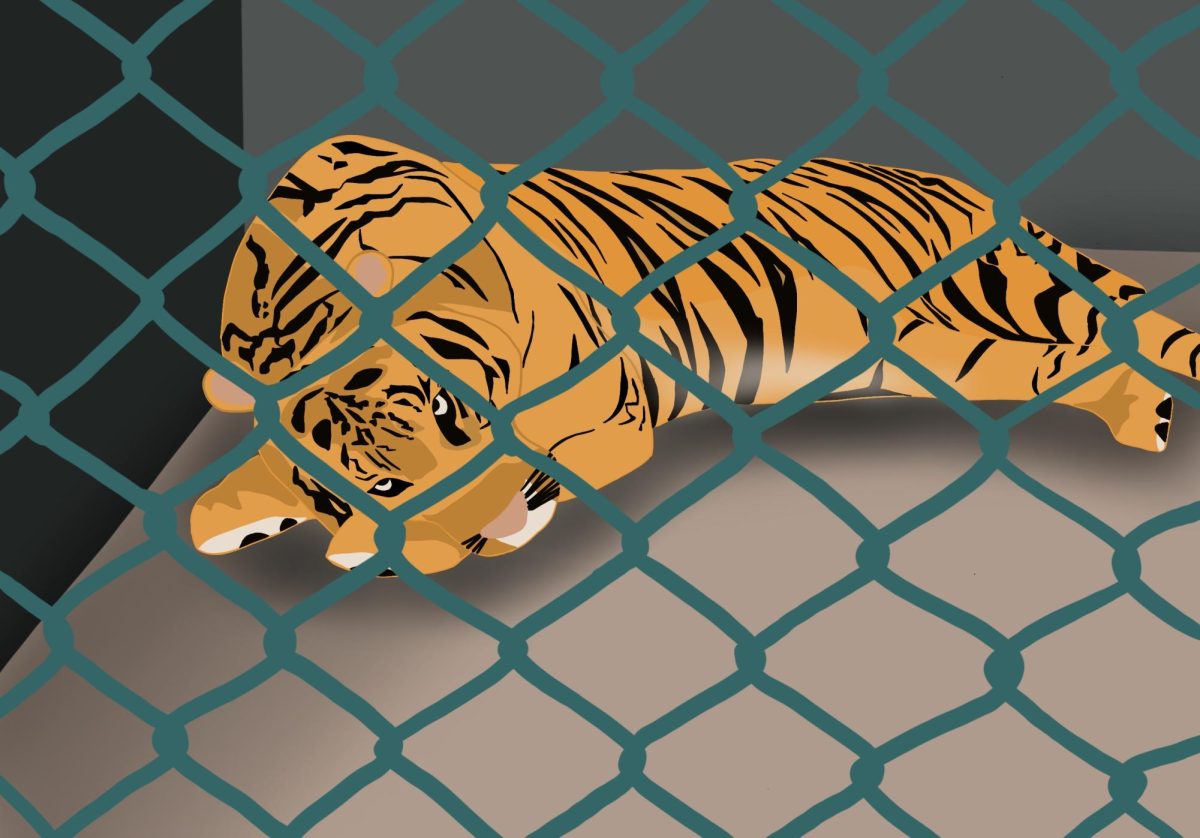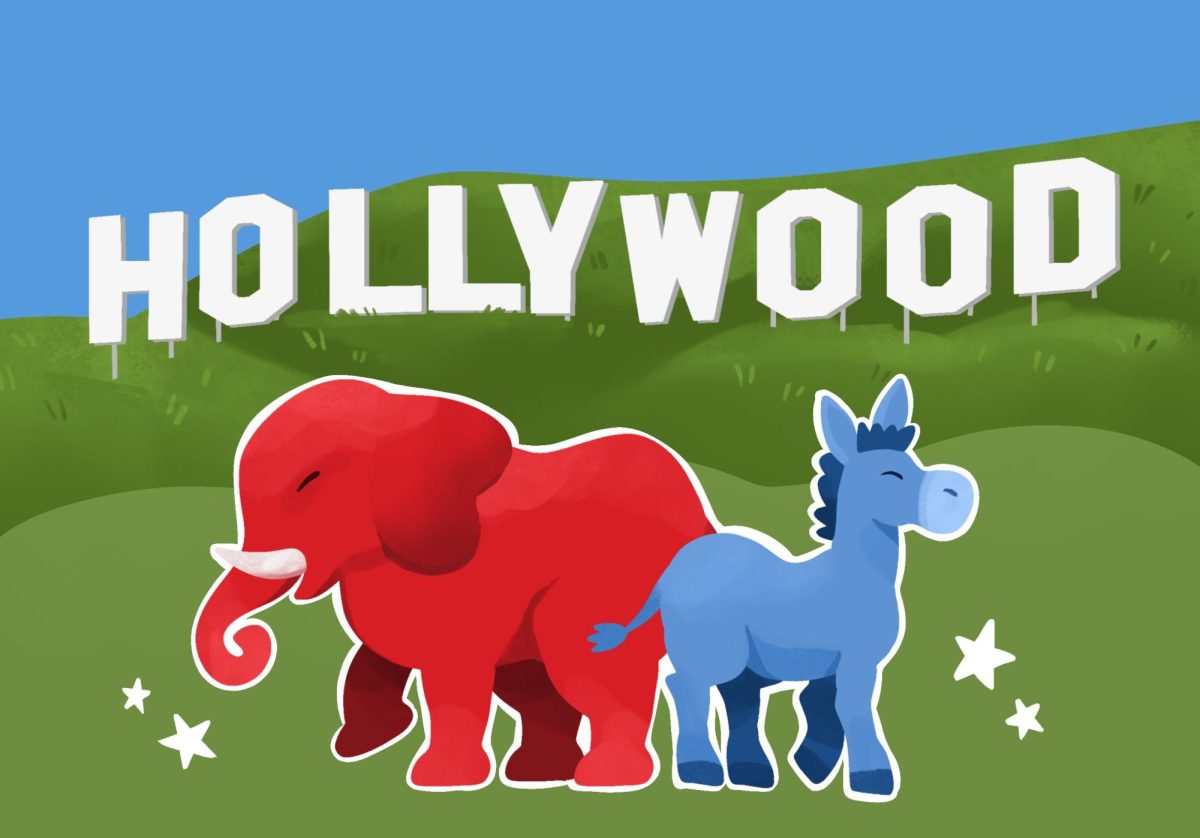I remember growing up and going to the zoo. The stingray exhibit was my favorite because they were one of the few animals people were allowed to touch. We would walk around for what felt like hours, casually viewing the animals.
As I grew up, the luster started to fade. I started to notice how small the enclosures were. I would stand in front of the tiger exhibit and watch the tiger pace back and forth.
I couldn’t help but feel claustrophobic.
Wealthy people created the first zoos as private collections, called menageries, to display their power. The modern, public zoo became popular in the 18th century during the Age of Enlightenment. Scientists wanted to research animal behavior and anatomy and, to do so, they needed to keep animals in places that resembled the animals’ natural habitats.
The “educational day out” model of zoos lasted until the late 20th century. Zoos began rebranding themselves as contributors to conservation and the idea was that seeing zoo animals would help motivate people to care about wildlife. The Association of Zoos and Aquariums (AZA) is a nonprofit organization that sets standards and policies for facilities in the United States and 12 other countries. For institutions that want to be accredited by the AZA, conservation focus must be a key component of their institution.
Despite the increasing emphasis on conservation and humane treatment of animals in modern zoos, some critics contend keeping animals in captivity is cruel. They argue captivity robs wild animals of their natural behaviors and instincts.
”As an accredited sanctuary, we do not believe in public contact or direct contact with wild animals,” said Tammy Thies, founder and executive director of The Wildcat Sanctuary in Minneapolis. “We feel that is putting our needs above the animals.”
According to Thies, the idea of public access to these animals through a zoo or sanctuary is fairly old-school. Thies said it was originally believed public interaction with animals would increase public interest in conservation. This has not been the case.
The question is, who are zoos for?
More than 700 million people visit zoos and aquariums worldwide each year, but biodiversity is still declining. The A.Z.A. claims its members host more than 50 reintroduction programs for species listed as threatened or endangered. However, a vast majority of zoo animals will spend their whole lives in captivity, either dying of old age or being culled as “surplus.”
I recently visited the Como Zoo & Conservatory in Minnesota and found the experience to be devastating. While walking through the penguin exhibit, my friend and I shared a look of mutual displeasure at the size of their enclosure. The exhibit was made to resemble their natural habitat, but the large boulders and bright blue water were anything but natural.
When I went to the polar bear exhibit, the polar bear was nowhere to be seen. The temperature outside was in the high 90s, which explains the absence. The enclosure was made with an outside extension where the polar bear can roam. In the absence of the polar bear, the small pile of slowly melting ice cubes in the enclosure seemed all the more stark.
Watching animal documentaries helps form two clear images of right and wrong in my head. In these documentaries, the animals roam far and wide, existing as they were meant to: within nature and without human interaction. When looking at the animals enclosed and desolate, the sense of wrongness became stronger.
Certain species have a particularly hard time when held within the bounds of captivity. Elephants, for example, are particularly unhappy in zoos due to their size, social nature and cognitive complexity. Zoo elephants tend to die young, and many suffer from arthritis and other joint problems from standing on hard surfaces.
Dolphins are another animal species that are highly sociable and suffer in captive settings. The Minnesota Zoo dolphin exhibit ended because of this. The dolphin exhibit was one of the most popular at the zoo, but after the sixth dolphin in their collection died in 2012, the exhibit closed.
The first death was in 2006 when a seven-month-old calf jumped out of the water and cracked its skull. Officials at the Minnesota Zoo say the dolphin shortage forced their decision, not the mistreatment of the animals. Regardless, the dolphin deaths support the argument that animals are not better off just because they are enclosed in a controlled space.
Animals suffer mentally when they are within the confines of zoos. Many zoos use Prozac and other psychoactive drugs on some of their animals to help them deal with the mental effects of captivity.
We need to start looking at the experiences of animals and put their needs above our entertainment. Conservation efforts are important, but the goal should be for the endangered animals to be released back into the wild. They should not be held under the guise of education. For zoos to retain their relevance, there must be a change in objective.
“I think the biggest thing is that it’s about seeing where we have common ground and where we can work together because people make change from inside,” Thies said. “I always say let’s work on shutting down the bottom feeders. That’s kind of what you see in Tiger King and those kinds of things. But organizations that are trying to do good, let’s collaborate more and see where we can come together for the animals.”
While they have held a long-standing position as places of entertainment and education, the growing recognition of the mental and physical toll captivity takes on animals urges us to reevaluate their purpose. The true measure of success for zoos should not solely be based on visitor numbers but on their genuine commitment to the well-being of the animals they house.
The path forward involves fostering a collective effort to safeguard wildlife and protect their natural habitats. It is time for the government to help provide funding for sanctuaries and encourage collaboration between zoos and sanctuaries to help create real change.
It’s not about what humans want, it’s about what the animals need.























